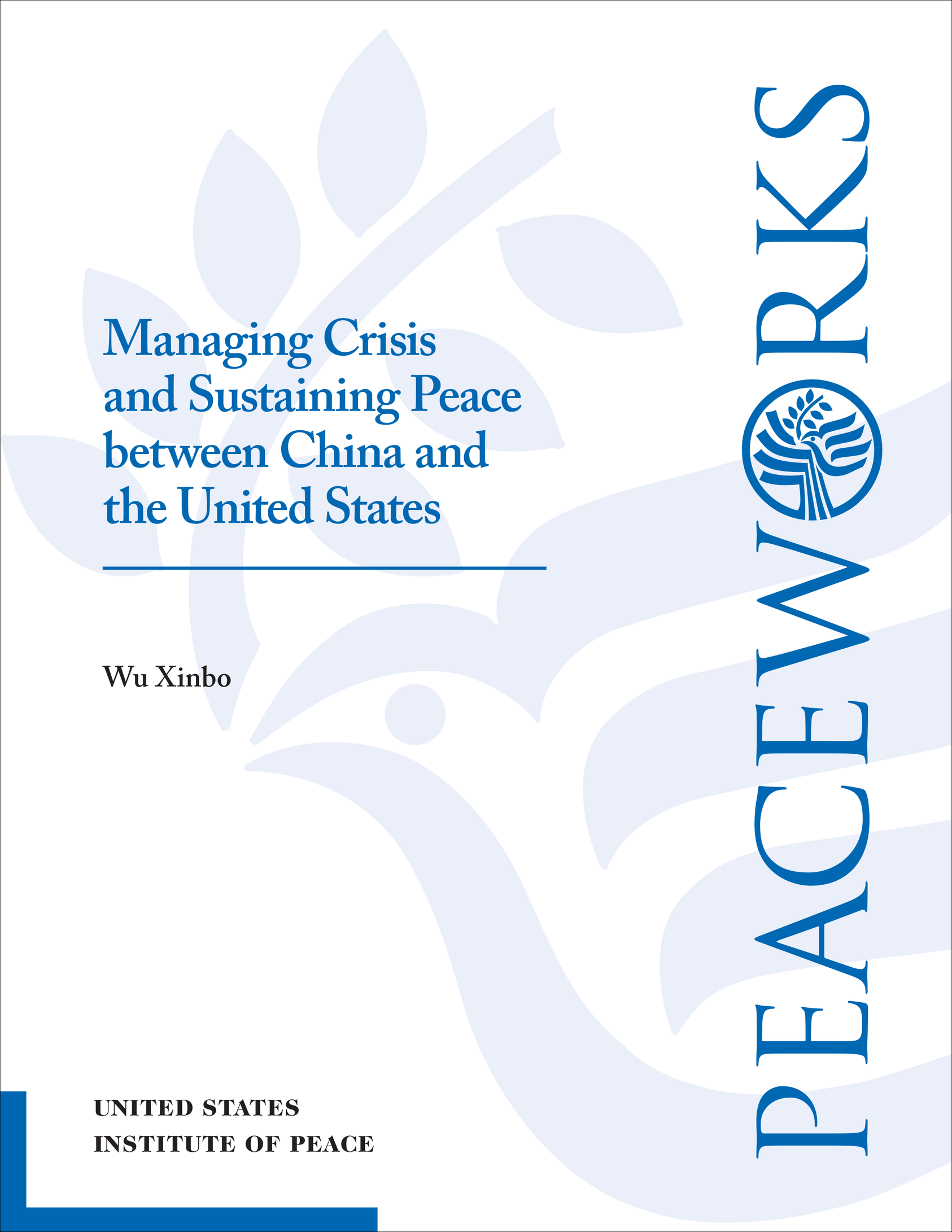Peaceworks No. 61
A series of crises have strained relations between the People’s Republic of China and the United States since the end of the Cold War. Although none of these crises led to direct military hostilities, they have had an adverse impact on bilateral relations and portend future such crises between the two countries. To determine how best to mitigate such crises in the future, it is important to study these recent crises and identify the positive and negative responses and actions of both governments during them.
Summary
A series of crises have strained relations between the People’s Republic of China and the United States since the end of the Cold War. Included most prominently among them are the Taiwan Strait crisis of 1996, the U.S. bombing of the Chinese embassy in Belgrade in 1999, and the midair collision between a U.S. reconnaissance aircraft and a Chinese fighter plane in 2001. Although none of these crises led to direct military hostilities, they have had an adverse impact on bilateral relations and portend future such crises between the two countries. To determine how best to mitigate such crises in the future, it is important to study these recent crises and identify the positive and negative responses and actions of both governments during them.
The Taiwan Strait crisis of 1996, sparked by Taiwanese president Lee Teng-hui’s visit to the United States, led to the first face-off between Chinese and U.S. militaries since President Richard Nixon’s visit to China in 1972. Even so, transparency on the part of China, restraint on the part of the United States, and regular communication between Beijing and Washington during the crisis helped reduce anxieties and the possibility of misjudgment on either side, thus avoiding an escalation of the crisis
The U.S. bombing of the Chinese embassy in Belgrade in 1999, which occurred in the midst of U.S.-led NATO air strikes against the former Yugoslavia, ignited strong and widespread demonstrations in China against the United States. The crisis was worsened by a slow and insufficient U.S. response to the incident, inadequate protection of U.S. diplomatic facilities in China, and a “conspiracy theory” adopted by Beijing about the bombing. Although the two governments ultimately moved beyond the incident, it took several months for both sides to bring bilateral ties back on track, and it left the Chinese with a long-term negative feeling toward the United States.
Compared with the Taiwan Strait and embassy bombing episodes in which reassurance and internal policymaking characterized events following the initial crisis, the EP-3 incident of 2001 featured bargaining between the two sides. In fact, it was the mismanagement of the incident that caused a diplomatic dilemma between China and the United States—and not the collision itself. Specifically, the deployment of three U.S. Navy destroyers in the South China Sea and President Bush’s strong-worded public statement served only to aggravate the situation, as did China’s delay in releasing the EP-3 crew. While positive steps taken by both sides ultimately helped lead to the resolution of the issue, the missteps taken by each side caused the escalation of the crisis and postponed its resolution.
A careful examination of these past crises reveals salient characteristics of both Chinese and U.S. crisis management, revealing commonality and distinctiveness in their respective practices. For example, on one hand, both sides tend to take steps to pressure for concessions during crisis, which only escalates crisis and heightens tensions. Additionally, both sides face the pressures of domestic politics during a crisis, thereby complicating the decision-making process of the two governments in resolving it. On the other hand, China emphasizes the preservation of sovereignty and national dignity in its approach to a crisis and places great significance on symbolic gestures, while the United States demonstrates a strong utilitarian tendency in responding to crisis and puts strong import on direct communication.
By drawing lessons from these past crises and understanding the characteristics of Chinese and U.S. crisis-management styles, specific, tailor-made recommendations about how to avoid and manage various future crises between the two nations can be made. But whether a future crisis is over Taiwan, a military accident, the Korean peninsula, or even a Sino-Japanese clash in the East China Sea, both sides must begin now to enhance their dialogue over crisis management to get a better sense of each other’s crisis management mechanism and to develop a capability to accurately interpret each other’s crisis behavior.
About the Author
Wu Xinbo is professor and deputy director at the Center for American Studies and associate dean at the School of International Relations and Public Affairs, Fudan University, where he teaches and writes widely on Sino-U.S. relations and U.S. Asia-Pacific policy. He is the author of Dollar Diplomacy and Major Powers in China, 1909–1913 (1997) and Turbulent Water: U.S., Asia-Pacific Security Strategy in the post-Cold War Era (2006) and has published numerous articles and book chapters in China, the United States, Japan, Germany, South Korea, Singapore, and India. He is also on the editorial board of The Washington Quarterly.
Wu entered Fudan University in 1982 as an undergraduate student, receiving his B.A. in history in 1986 and later his PhD in international relations in 1992. He joined Fudan University's Center for American Studies upon completing his studies and spent one year at George Washington University as a visiting scholar in 1994. In the fall of 1997, he was a visiting fellow at Stanford University's Asia-Pacific Research Center and the Henry Stimson Center in Washington, D.C. From January to August 2000, he was a visiting fellow at the Brookings Institution and from September 2006 to July 2007 he was a Jennings Randolph Senior Fellow at the United States Institute of Peace.
